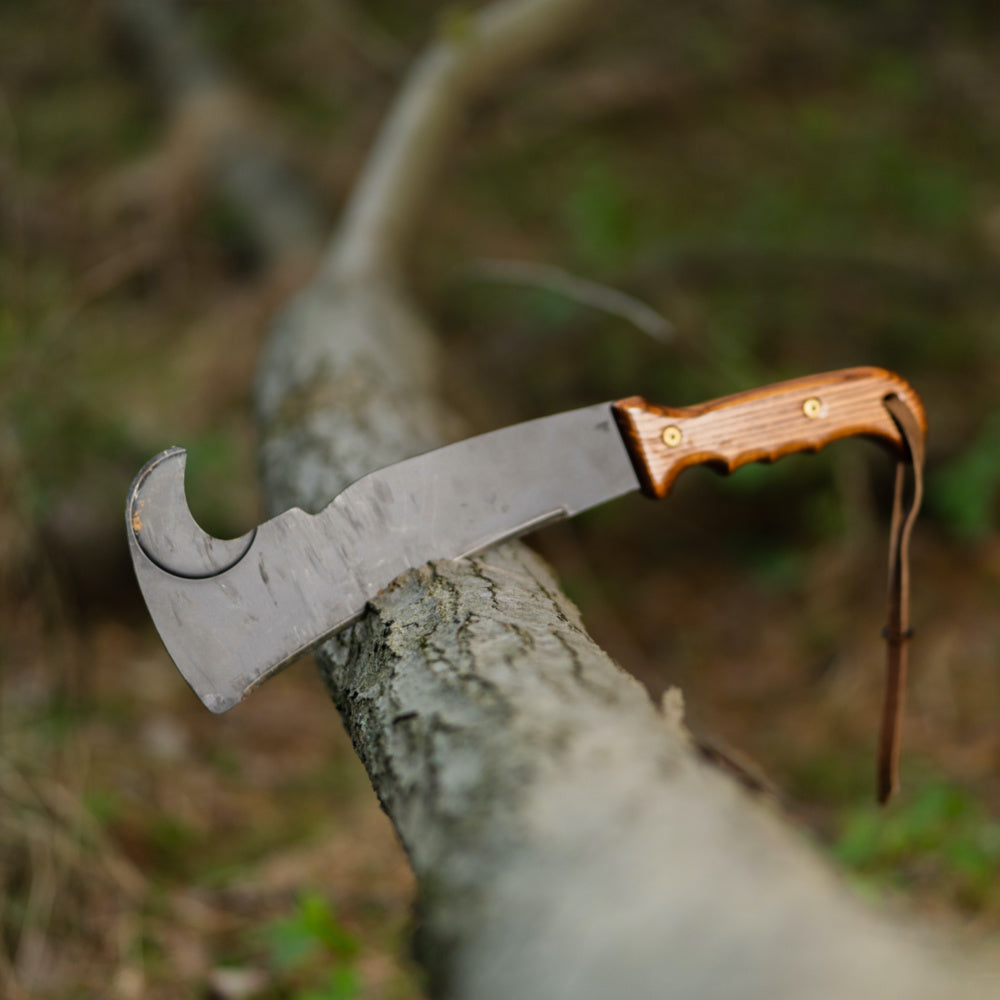Machetes are among the most versatile and essential tools for anyone spending time outdoors. With a rich history spanning centuries, machetes have proven invaluable for various tasks.
Understanding proper machete techniques can make your outdoor adventures more productive, efficient, and safe.
This guide covers an array of tips and proper machete techniques for outdoor safety to help you make the most of your tool.
Machete Safety
Machetes, while incredibly useful, can be dangerous if not handled correctly. Their history as both a tool and a weapon highlights the importance of safety. Whether you're using a machete for clearing brush, chopping wood, gardening, or camping, practicing proper safety measures is crucial to prevent accidents and injuries.
Understanding and implementing these safety guidelines will help you use your machete effectively and responsibly:
- Maintain a Safe Distance: Always ensure a 10-foot radius around you is clear of people before unsheathing your machete. This precaution helps prevent accidental injuries.
- Check for Obstacles: Inspect your surroundings for any physical barriers, such as overhead branches or rocks, that might interfere with your swing.
- Announce Your Intentions: Inform those nearby that you are about to use a machete to avoid unexpected interruptions.
- Grip and Slippage Prevention:
- Avoid using a machete with wet or sweaty hands.
- Wear gloves with a non-slip grip.
- Use a lanyard on the hilt for added security.
- Swing Away from Your Body: Always swing the machete away from your body to avoid self-injury. Careless swings can lead to cuts on your free hand or opposite leg.
- Sheath Your Machete: Treat an unsheathed machete like a loaded gun. Always sheath your machete when not in use to prevent accidental harm.
- Rest When Tired: Using a machete can be physically demanding. Take breaks to avoid fatigue, which can reduce your ability to use the tool safely and effectively.
Machete Techniques
Using a machete effectively requires proper technique.
Proper technique not only enhances your efficiency but also significantly reduces the risk of injury. Whether you are clearing brush, chopping wood, or using it for self-defense, mastering machete techniques will ensure you get the most out of this versatile tool.
Below are essential techniques and tips that every machete user should know to handle the tool safely and proficiently.
Here are some key points to master:
- Proper Grip: Beginners often grip the machete too tightly, leading to blisters. Instead, use a pinch grip, focusing pressure on your thumb, index, and middle fingers. This grip allows the hilt to move slightly, enhancing cutting power and preventing blisters.
- Correct Swing Angle: Swing the blade at a 45-degree angle. This technique maximizes cutting efficiency and safety by ensuring clean cuts and reducing the risk of the blade slipping and causing injury.
- Keep the Blade Sharp: A sharp machete is safer and more effective. Regularly sharpening your blade minimizes the risk of injuries from incomplete cuts.
Now You’re Ready to Use the Woodman’s Pal
Now that you’re familiar with these proper machete techniques for outdoor safety, it’s time to choose the best multi-use axe/machete/land clearing tool: The Woodman’s Pal.
Introduced in 1941, the original Woodman’s Pal remains a top choice for outdoor and survival tools. Its unique design combines a machete with additional features for versatility and efficiency. Available in a choice of leather-wrapped or wood handle, our high-quality Woodman’s Pal comes with a sheath, ensuring both safety and convenience.
Shop for the Woodman’s Pal and our line of accessories today!
